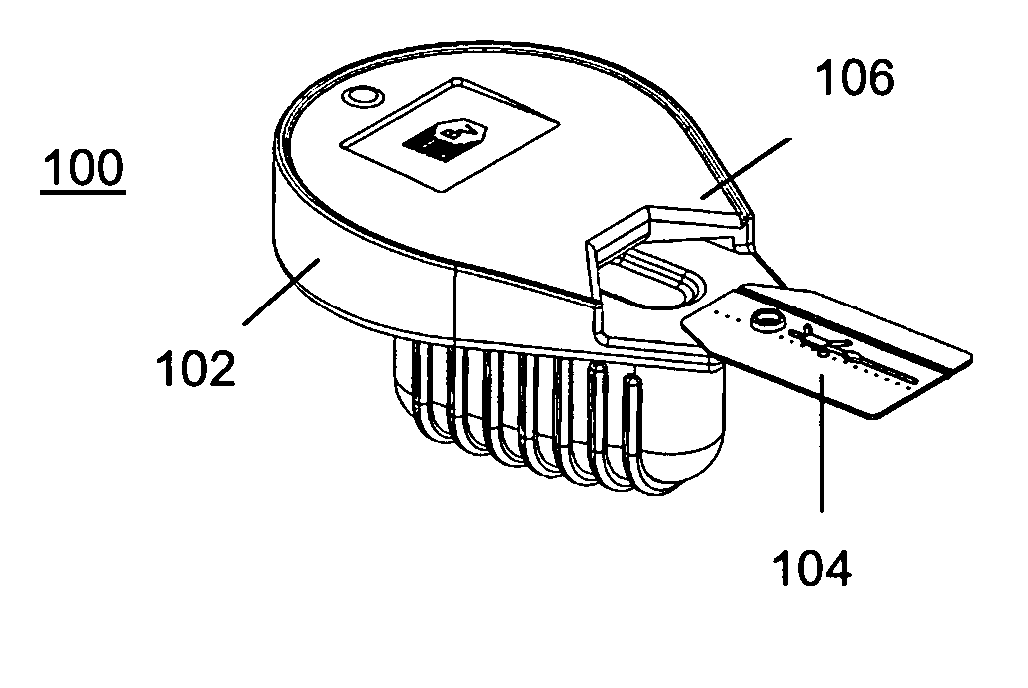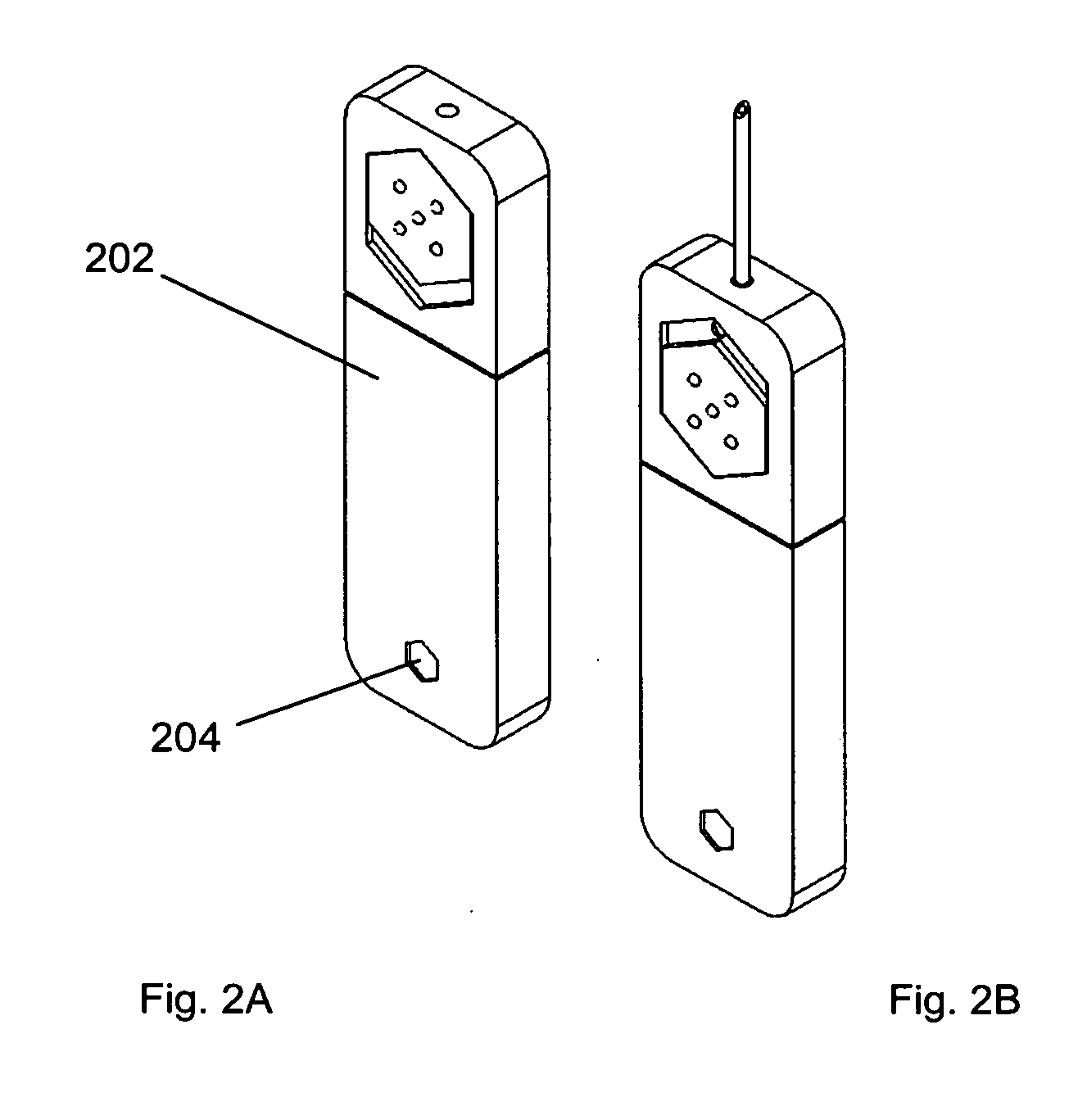Assay cartridges and methods for point of care instruments
a technology of assay cartridges and instruments, applied in the field of assay cartridges and kits, to achieve the effect of reducing cartridge and instrument complexity and improving performan
- Summary
- Abstract
- Description
- Claims
- Application Information
AI Technical Summary
Benefits of technology
Problems solved by technology
Method used
Image
Examples
example 1
Free-Bound Separation Using Stoke's Washing
[0316] A fluidic structure similar to that in FIG. 17C was constructed. An image of the structure in shown in FIG. 19, wherein analogous parts have the same last two digits. The flow channels were formed by cutting 0.004 inch thick double sided adhesive tape (ARCare 8039) to the desired widths. The tape layer was sandwiched on the top and bottom with transparent Mylar (Duralar). The magnet (labeled 1901, which is analogous to magnet 1701 in FIG. 17 and magnet 1801 in FIG. 18) is a rectangular magnet whose dimensions are 0.125 inch (wide), 0.188 inch (long), 0.138 inch (high, direction of magnetization) and a magnetic energy product of 45 MGO, purchased from Dexter Magnetic Technology (Elk Grove Village, Ill.). Fluidic structure 1914 (width is 0.060″, analogous to fluidic structure 1714) holds test sample 1902 (analogous to incubated sample 1702). Test sample 1902 comprises 0.35 μm diameter carboxyl coated magnetic particles (part number CM...
example 2
Magnetic Particle Stokes' Wash Using Bilayer Flow and Electrochemiluminescence Detection
[0317] A test was run to assess the wash performance of a device configured with a dynamic bilayer flow arrangement (analogous to FIG. 17a). The device had two inlets and one common outlet. The two inlet flow paths were joined to form a uniform rectangular channel (width=0.140 inch, height=0.025 inch, volume=25 μL). Fluids entering the two inlets converged and joined to form two liquid layers; i.e. bilayer. The relative flow rate into each inlet was adjusted such that layer thicknesses were nearly the same. In the top most flow passageway, sample solution was drawn using a syringe pump at 20 μL / s. In the bottom passageway, a wash or separation buffer was drawn using the same pump at 20 L / s. The wash layer within the channel flowed over a 90% platinum / 10% iridium electrochemiluminescence (ECL) electrode. A counter electrode was located opposite the ECL electrode on the top most surface. Because o...
example 3
Magnetic Particle Stokes' Wash Using Bilayer Flow and Electrochemical Detection
[0325] As a means to further assess the wash performance of the dynamic bilayer flow arrangement, as described above, an electrochemical measurement was carried out.
[0326] The wash performance was assessed using the same solutions and devices as above. Instead of measuring the extent to which unwashed substances interfere with ECL, the extent to which unwashed or adsorbed substances foul the electrode was measured. Electrode fouling occurred when components of the sample solution, such as serum proteins, adsorbed on the electrode and block the passing of current to the electrode.
[0327] For each device the electrochemical current for tri-n-propylamine oxidation in the wash liquid was used as a measure of electrode fouling. The results were reported as a recovery; the ratio of current from the sample solution to the current from the control. A recovery of 100% would have indicated that the device washed ...
PUM
| Property | Measurement | Unit |
|---|---|---|
| diameters | aaaaa | aaaaa |
| diameter | aaaaa | aaaaa |
| length | aaaaa | aaaaa |
Abstract
Description
Claims
Application Information
 Login to View More
Login to View More - R&D
- Intellectual Property
- Life Sciences
- Materials
- Tech Scout
- Unparalleled Data Quality
- Higher Quality Content
- 60% Fewer Hallucinations
Browse by: Latest US Patents, China's latest patents, Technical Efficacy Thesaurus, Application Domain, Technology Topic, Popular Technical Reports.
© 2025 PatSnap. All rights reserved.Legal|Privacy policy|Modern Slavery Act Transparency Statement|Sitemap|About US| Contact US: help@patsnap.com



